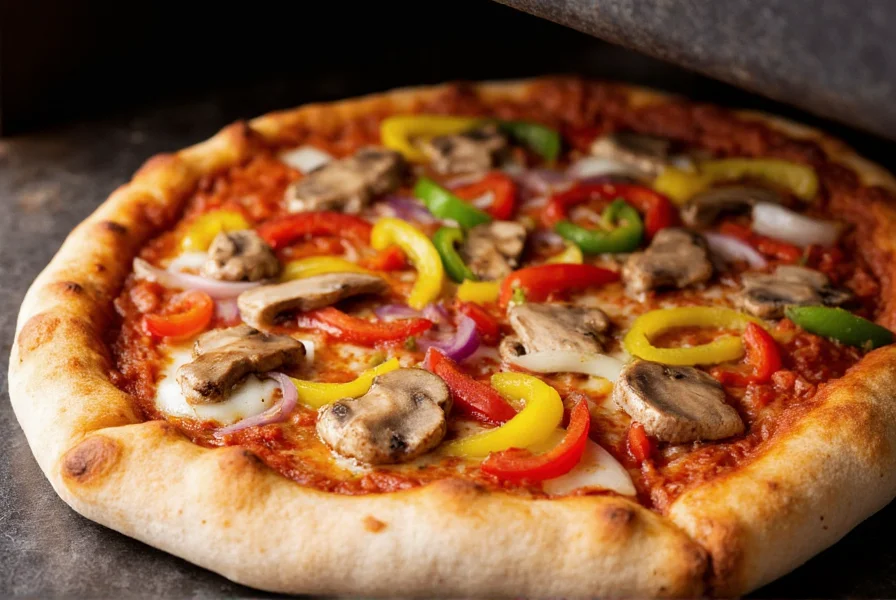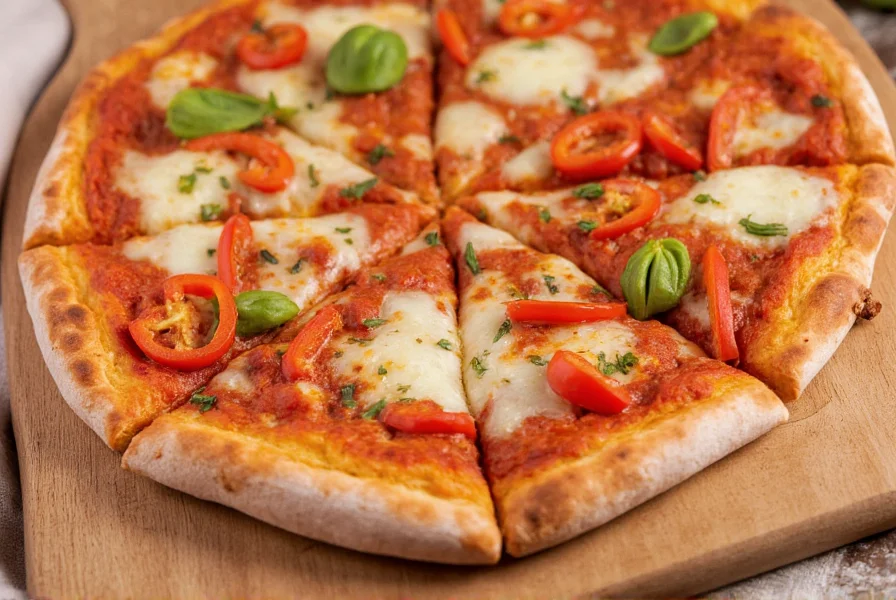Pepper pizza features fresh or roasted peppers as a primary topping, distinct from pepperoni pizza. Bell peppers (green, red, yellow), jalapeños, banana peppers, and poblano peppers work best, each offering unique flavor profiles from sweet to spicy. For optimal results, slice peppers thinly, pre-roast for enhanced sweetness, and pair with complementary ingredients like onions, mushrooms, and goat cheese.
Understanding Pepper Varieties for Pizza
When crafting the perfect pepper pizza, selecting the right pepper variety is crucial. Bell peppers remain the most popular choice for pizza enthusiasts seeking a sweet, mild flavor profile. Green bell peppers offer a slightly bitter note that balances well with rich tomato sauce, while red and yellow varieties provide natural sweetness that caramelizes beautifully during baking.
Jalapeños deliver moderate heat (2,500-8,000 Scoville units) perfect for those wanting spicy pizza toppings without overwhelming heat. For milder options, banana peppers (250-500 Scoville) provide tangy sweetness, while poblano peppers (1,000-2,000 Scoville) offer earthy depth with moderate heat that intensifies when roasted.

Optimal Preparation Techniques
Proper pepper preparation significantly impacts your pepper pizza's final quality. Always slice peppers uniformly to 1/8-inch thickness for even cooking. Thin slices prevent sogginess while ensuring complete cooking during the pizza's short bake time.
Professional pizzaiolos recommend pre-roasting peppers to enhance flavor complexity. Simply toss sliced peppers with olive oil, salt, and herbs, then roast at 400°F for 15-20 minutes until edges caramelize. This technique reduces moisture content that could make pizza soggy while concentrating natural sugars for superior flavor.
| Pepper Type | Heat Level | Best Pairings | Prep Recommendation |
|---|---|---|---|
| Bell Peppers | Mild (0 SHU) | Mozzarella, onions, mushrooms | Thin slices, no pre-cook needed |
| Jalapeños | Medium (2,500-8,000 SHU) | Pepperoni, cheddar, corn | Thin rings, optional deseeding |
| Banana Peppers | Mild (250-500 SHU) | Ham, olives, feta | Thin slices, works well pickled |
| Poblano Peppers | Moderate (1,000-2,000 SHU) | Goat cheese, corn, black beans | Roast first for best flavor |
Flavor Pairing Strategies
Creating balanced flavor profiles elevates your pepper pizza from ordinary to exceptional. Sweet bell peppers complement savory ingredients like caramelized onions and mushrooms, while spicy varieties like jalapeños pair effectively with cooling elements such as goat cheese or ranch drizzle.
Consider these professional pairing combinations:
- Classic Trio: Green, red, and yellow bell peppers with onions and black olives creates visual appeal and balanced flavor
- Southwest Style: Roasted poblano peppers with corn, black beans, and chipotle sauce offers regional authenticity
- Spicy Deluxe: Jalapeños with pepperoni, banana peppers, and hot honey drizzle provides layered heat
- Vegetarian Delight: Mixed roasted peppers with artichoke hearts and sun-dried tomatoes delivers Mediterranean flair

Avoiding Common Pepper Pizza Mistakes
Many home cooks make critical errors when preparing pepper pizza that compromise quality. The most frequent mistake involves adding excessive raw peppers directly to pizza without moisture management. Peppers contain high water content that can create a soggy crust if not properly addressed.
Another common issue is uneven heat distribution. When using spicy peppers like jalapeños, distribute slices evenly rather than clustering them in one area. For consistent flavor, mix different pepper varieties throughout the pizza rather than separating them into sections.
Timing matters significantly—add delicate peppers like thinly sliced bell peppers directly to raw pizza dough before baking. Reserve pre-roasted or pickled peppers for post-bake application to preserve their texture and flavor integrity.
Seasonal Pepper Considerations
Pepper availability and quality vary throughout the year, directly impacting your pizza's flavor profile. During summer months, locally grown bell peppers reach peak sweetness and crispness, making them ideal for fresh applications. Winter months often yield less flavorful peppers that benefit from roasting to enhance their natural sugars.
When selecting peppers, look for firm, glossy skins without wrinkles or soft spots. Heavier peppers for their size typically contain more moisture and better flavor. Store peppers in the refrigerator's crisper drawer for up to one week, but bring to room temperature before using to maximize flavor release during baking.
FAQ Section
What's the difference between pepper pizza and pepperoni pizza?
Pepper pizza features actual peppers (like bell peppers or jalapeños) as toppings, while pepperoni pizza uses the cured meat product called pepperoni. The confusion often comes from similar names, but they're completely different ingredients with distinct flavors and textures.
Should I pre-cook peppers before adding them to pizza?
For most peppers, pre-roasting significantly improves pizza results by reducing moisture content and enhancing natural sweetness. Thinly sliced bell peppers can go on raw, but jalapeños, poblanos, and thicker pepper slices benefit from 10-15 minutes of roasting before topping your pizza.
Which cheese pairs best with pepper pizza?
Mozzarella remains the classic choice for pepper pizza, but goat cheese complements roasted peppers exceptionally well. For spicy pepper varieties, consider adding a touch of creamy feta or ricotta to balance the heat. Provolone also works beautifully with roasted bell peppers for enhanced flavor complexity.
How can I prevent my pepper pizza from becoming soggy?
To prevent sogginess, always slice peppers thinly (1/8-inch), remove seeds and membranes from spicy varieties, and consider pre-roasting to reduce moisture content. Applying a thin layer of cheese directly on the dough before adding peppers creates a moisture barrier that protects the crust.
Can I use pickled peppers on pizza?
Yes, but use pickled peppers sparingly and add them after baking. Their high vinegar content can make pizza soggy if baked directly. Pickled banana peppers work particularly well as a finishing touch on fully cooked pizza, adding tangy contrast to rich cheese and tomato flavors.











 浙公网安备
33010002000092号
浙公网安备
33010002000092号 浙B2-20120091-4
浙B2-20120091-4